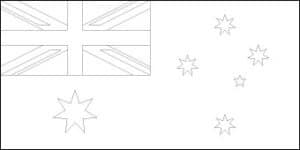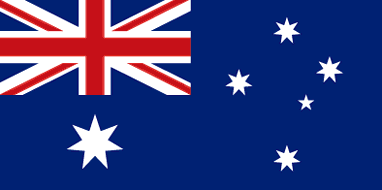
The world’s smallest continent is Australia. Sahul, Meganesia, and Australinea are other names for it. It consists of sections of Indonesia, East Timor, Papua New Guinea, and the Australian mainland. Australia’s mainland is bordered to the north by Indonesia, Papua New Guinea, and East Timor; to the northeast by New Caledonia, the Solomon Islands, and Vanuatu; and to the southeast by New Zealand.
Indigenous tribes had lived on the continent for almost 40,000 years before European invaders arrived in the 18th century. The continent’s economy ranks as the thirteenth largest in the world. East Timor, Papua New Guinea, the Commonwealth of Australia, and a portion of Indonesia are all located on the continent.
Facts about Australia flag |
|---|
| Country | Australia |
|---|---|
| Adopted | Sep 3, 1901 |
| Design and Colors | A Blue Ensign defaced with the Commonwealth Star (also known as the Federation Star) in the lower hoist quarter and the five stars of the Southern Cross in the fly half. |
| Size Ratio | 1:2 |
Facts about Australia
| Area | 3,269,629 sq miles |
| Population | 31,260,000 |
| Total No. of Countries | 3 (Australia, Papua New Guinea, and East Timor) |
| Time Zones | GMT+10, GMT+9.30, GMT+8 |
| National symbol(s): | Southern Cross constellation (composed of five stars: four large seven-pointed stars, and one small five-pointed star), kangaroo, emu |
| National colors: | green, gold |
| National anthem: | |
| Name: | “Advance Australia Fair” |
| Lyrics/music: | Peter Dodds McCormick |
Historical Background
The current design of the Australian flag was chosen in 1901, following a competition to create a flag for the newly federated nation of Australia. The winning design was the result of combining different elements from various submissions.
Design and Colors
The Australian flag consists of three main components: the Union Jack in the canton (upper left corner), the Commonwealth Star beneath the Union Jack, and the Southern Cross constellation on the fly (right-hand side). The field (background) of the flag is blue.
Symbolism of the Australian Flag
Each element of the Australian flag holds significant symbolism. The Union Jack represents Australia’s historical ties to Great Britain, as the country was initially colonized by the British. The Commonwealth Star, also known as the Federation Star, has seven points that represent the six original states of Australia and the territories, symbolizing the unity of the nation. The Southern Cross, composed of five white stars, is a prominent feature of the Australian sky and is an important navigational reference in the Southern Hemisphere.
Australia Day
Australia Day is celebrated on January 26th each year, commemorating the arrival of the First Fleet in 1788 and the founding of the first British colony in Australia.
FAQs
Q1: When was the current design of the Australian flag chosen?
The current design of the Australian flag was chosen in 1901, following a competition to create a flag for the newly federated nation of Australia.
Q2: What do the elements on the Australian flag symbolize?
The Union Jack represents Australia’s historical ties to Great Britain, the Commonwealth Star symbolizes the unity of the nation, and the Southern Cross represents an important navigational reference in the Southern Hemisphere and is a prominent feature of the Australian sky.
Q3: What is Australia Day?
Australia Day is celebrated on January 26th each year, commemorating the arrival of the First Fleet in 1788 and the founding of the first British colony in Australia.

